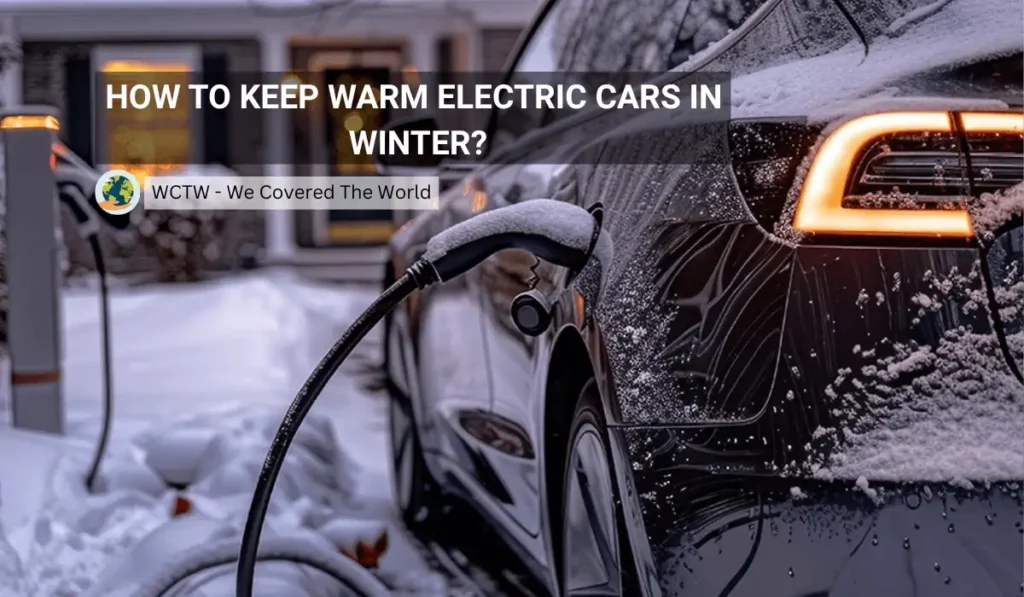As the winter season starts, many electric vehicle (EV) owners start to wonder how their cars will perform in cold temperatures. Nowadays, many reports shows that Tesla Model 3 and Model Y owners facing heating issues. It’s very important to know the heating systems used in modern electric vehicles and understand what options are available for keeping warm when temperatures drop. In this post, we’ll talk about how you can keep your electric vehicle warm in winter conditions.
Heating Challenges in Electric Vehicles
Winter brings unique challenges for electric vehicle owners, particularly regarding cabin heating. Unlike traditional gasoline vehicles that can use engine heat, EVs must rely entirely on electric heating systems. This means that the efficiency of these heating systems is important, especially when the winter season starts.
The situation becomes critical in areas like Canada, where temperatures can drop significantly. Reports indicate that some Tesla owners are experiencing inadequate heating in their new vehicles. This raises a critical question, how do these systems work, and what can be done to improve them?
Types of Heating Systems in Electric Vehicles
Electric vehicles generally utilize three main types of heating systems.
- Resistive Heating
- Positive Temperature Coefficient (PTC) heating
- Heat pumps
Each has its pros and cons, and understanding them can help you make an informed decision when purchasing an EV.
1. Resistive Heating
Resistive heating is the most straightforward method used in many electric vehicles. It works similarly to portable electric heaters, using high resistance wires to generate heat when electricity passes through them. The hot air produced is then circulated throughout the cabin.
While resistive heating is effective and can heat the cabin relatively quickly, but it is not energy efficient. These systems often consume between two to three kilowatts of electricity, which significantly drains the battery. For instance, if you’re driving for an hour in winter, that’s a considerable amount of energy that could have been used for your driving.
2. Positive Temperature Coefficient (PTC) Heating
PTC heating is a more advanced option that Tesla has utilized in the past. These heaters are designed to be more energy efficient, as they can adjust their power consumption based on the temperature. When temperatures drop, the PTC heater allows more electricity to flow, generating heat without overheating.
However, while PTC heaters are better than resistive systems, they still convert electrical energy into heat. Which means they are not the most efficient option available.
3. Heat Pumps
Heat pumps represent a significant advancement in vehicle heating technology. They work by transferring heat from one place to another rather than generating heat directly. This makes them exceptionally energy efficient, as they can extract heat from the external environment, even in cold conditions.
However, the effectiveness of heat pumps diminishes in extremely cold temperatures. As temperatures drop, extracting heat from the outside air becomes increasingly challenging, which can lead to insufficient heating in the cabin.
Heating Efficiency in Cold Weather

Regardless of the heating system in your EV, there are some strategies you can apply to maintain comfort during the winter months. Here are some practical tips :
- Precondition Your Vehicle: If your EV has a smartphone app, use it to preheat the cabin while still plugged in. This way, you draw power from your home rather than the battery.
- Use Heated Seats and Steering Wheels: Instead of cranking up the cabin heat, utilize heated seats and steering wheels, which consume less energy.
- Keep Your Battery Charged: Aim to keep your battery charged above 20% to ensure you have enough power to heat the cabin when needed.
- Park in a Garage: If possible, park in a garage or sheltered area to keep your vehicle warmer and reduce the energy needed for heating.
Battery Management System in Winter
It’s essential to understand that cold temperatures can also affect battery performance. EV batteries operate best at moderate temperatures, and when it gets too cold, their efficiency can decrease.
Many electric vehicles come equipped with thermal management systems to keep the battery within an optimal temperature range. This system can consume energy, further reducing range in cold weather. Thus, it’s crucial to consider how the heating system impacts overall battery performance during winter.
Long Term Solutions for Winter Heating
While current heating options have their limitations, there are innovative solutions that could emerge in the future. For example, some automakers are exploring dual heating systems that incorporate both electric and liquid-fueled options. This could provide better heating efficiency without draining the battery.
Although it may add complexity and cost to vehicle manufacturing, such systems could prove invaluable in extremely cold climates. The Volvo XC40 electric car is an example, featuring multiple heating elements to ensure comfort in harsh winters.
Why Tesla’s Heat Pumps are Struggling?
The recent issues reported by Tesla owners may stuck from their switch to heat pumps in the Model 3 and Model Y. If the ambient temperature is significantly below freezing, the heat pump may struggle to extract enough heat from outside. This could explain why some vehicles are not adequately warming their cabins.
While it’s too early to find out whether the problem is due to hardware or software, Tesla is likely working on a solution. It’s essential for all automakers to address heating issues, as driving without sufficient cabin heat can be unsafe.
Conclusion
As the winter comes, preparing for the cold weather challenges that electric vehicles may face is crucial. Understanding the heating systems available and applying strategies to maximize efficiency can make a significant difference in comfort and safety.
While current options may not be perfect, advancements in technology and innovative solutions are to come in the future. By staying informed and prepared, EV owners can enjoy their electric vehicles year-round, even in the coldest conditions.
Passionate about Automobile, EV and Technologies. A highly motivated Tech Enthusiasts.


